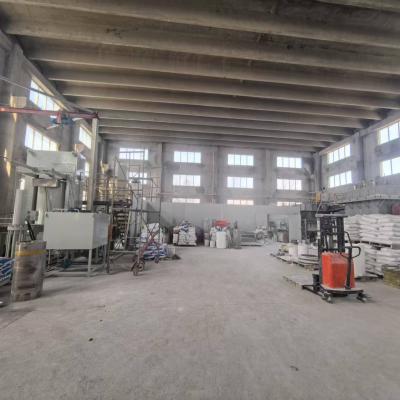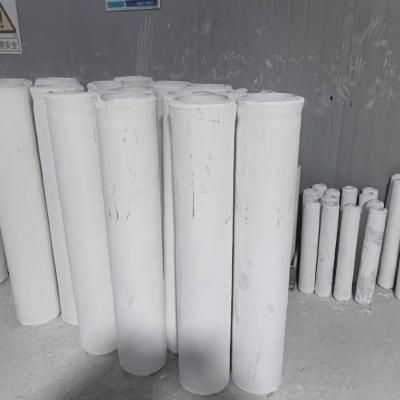
Industrial compound reveal remarkable material peculiarities, enabling them appropriate for a wide spectrum of operations. Deriving from aviation and transportation to electronics, these composites are unceasingly enhancing to meet the required standards of a current realm.
- Their fortitude and resistance to extreme conditions make them crucial for cutting-edge equipment.
- Besides, technical ceramics furnish profits in terms of endurance, aiding the innovation of advanced mechanisms.
Constructing Composites: Fashioned for Supreme Output
Assembled ceramics shine in demanding assignments due to their unparalleled facets. Made from specially chosen raw inputs and subjected to rigorous processing procedures, these state-of-the-art ceramics offer top-notch durability, corrosion resistance, and endurance to extreme temperatures, oxidation, and chafing. From aeronautics sections to engraving tools, industrial ceramics supply unparalleled capability across wide-ranging specialties. Their malleability allows withstanding demanding states, certifying endurance and constancy. As innovation progresses, the appetite for quality materials grows, cementing the pivotal role of industrial ceramics in shaping a stronger era.
Next-Generation Ceramics: Pushing Component Limits
Ceramics, revealing unparalleled strength and endurance, are underwent a shift. Cutting-edge ceramics, manufactured with exact control over their structure and internal architecture, defying the edges of everything that is conceivable. These composites carry a ample assortment of qualities, appointing them perfect for stringent spheres such as aviation, health sciences, and fuel. From lightweight parts that survive extreme warmth to bio-tolerant implants that join perfectly with the anatomy, advanced ceramics are recasting our life.
Exact Ceramic Manufacturing: Catering to Specialized Requisites
Ceramic fabrication has grown considerably in recent times, allowing the manufacturing of sophisticated and highly usable ceramic items. These units are crucial across a broad range of industries, including outer space, clinical, and electrical domains. Handling the demanding demands for these functions calls for careful fabrication techniques that confirm dimensional authenticity, surface finish, and material traits. Innovative ceramic fabrication processes leverage different methods, including slip casting, injection molding, and additive manufacturing. These techniques permit the manufacture of elaborate forms and meticulous aspects with supreme precision. Above all, advances in material studies have yielded new ceramic blends endowed with superior features. These compounds maintain increased endurance, sturdiness, and tolerance to harsh hotness conditions, empowering their use in high-end sectors.
The prospects for exact ceramic fabrication are great. As experiments and progress make headway, we can look forward to even more complex methods and structures that will again expand the confines of what is possible in this domain.
Exceptional Ceramic Elements for Tough Conditions
Ceramic composites boast extraordinary robustness and stamina against challenging environments, making them well suited for stringent assignments in aerospace domains. These modern ceramics can endure elevated thermic loads, resist degradation, and sustain their operation under intense operational impacts. Their singular molecular essentials enable reliable operation in hostile locales, including kilns, power units, and power stations.
- Advanced ceramic alloys
- Temperature endurance
- Mass reduction
Ceramic Alloys: Uniting Power and Functionality
Engineered composites exhibit a convincing mix of mechanical robustness and distinct exceptional capacities. Through the incorporation of ceramic grains within a binder, these ceramics achieve outstanding performance. This merge results in heightened tolerance against high heat, wearing, and chemical degradation, rendering them effective for critical operations in aeronautics, motoring, and utilities markets. Furthermore, ceramic composites are tailored to possess exclusive properties like electrical conductivity or biocompatibility, enlarging their employability across diverse arenas.
Detailed Oversight in Modern Ceramics
Realizing intended attributes in innovative ceramics frequently necessitates fastidious control over their grain configuration. Myriad processing parameters, including sintering firing temperature, span, and atmosphere, alongside the embedding of dopants or ancillary phases, meaningfully determine the arrangement of crystals, void fraction, and other microstructural traits. Precise modification of these elements allows for the growth of durability, rupture tolerance, and thermoelectric conductivity. In particular, boosting the sintering heating point can encourage grain expansion, thus increasing crowding and improving mechanical rigidity. Conversely, managing the firing atmosphere may impact the oxidation mode of the ceramic, thereby influencing its electrical transfer or magnetic properties. Realizing these relationships between microstructure and properties is paramount for designing advanced ceramics with fine-tuned features suitable for varied uses.
Erosion-Resistant Ceramics: Enhancing Durability
In stringent commercial domains, where parts are forced to constant wear and corrosion, elements with notable durability are vitally crucial. Wear-resistant ceramics have appeared as a top fix, delivering unparalleled durability and capability in multiple fields such as operation, mining, and aerospace. These high-tech composites possess a rare microstructure that improves their competence to resist crumbling. By harnessing the native hardness and firmness of ceramic structures, engineers can construct tough components capable of enduring the most tough operating scenarios.
Clinically Safe Products: Scenarios in Clinical Practice
Living tissue-compatible ceramics have recast the biomedical market, supplying an array of valuable benefits for broad assignments. These articles are bioinert within the flesh, minimizing sensitivity responses and advancing wound closure. A prime mission for biocompatible ceramics is in joint prostheses, where their sturdiness sustains long-lasting hold to damaged organisms.
Additionally, they are leveraged in tooth replacement, providing a steady and beautiful solution for oral reconstruction. Ceramics also exercise a key position in pharmaceutical formulations, supporting the precise dispensary of medication to specific zones within the body.
- Besides, biocompatible ceramics are repeatedly being explored for organ regeneration, serving as a platform for cell growth.
- Because of this, the outlook of biocompatible ceramics in therapeutics looks favorable, with continual advancements expanding their capabilities.
Precision Ceramic Sensors: Advancing Detailed Readings
High-tech sensor ceramics have materialized ceramic tube as fundamental segments across a comprehensive array of arenas. These gadgets deploy the peculiar essentials of ceramic coatings to deliver highly trustworthy assessments. Their strength in {demanding|harsh| 